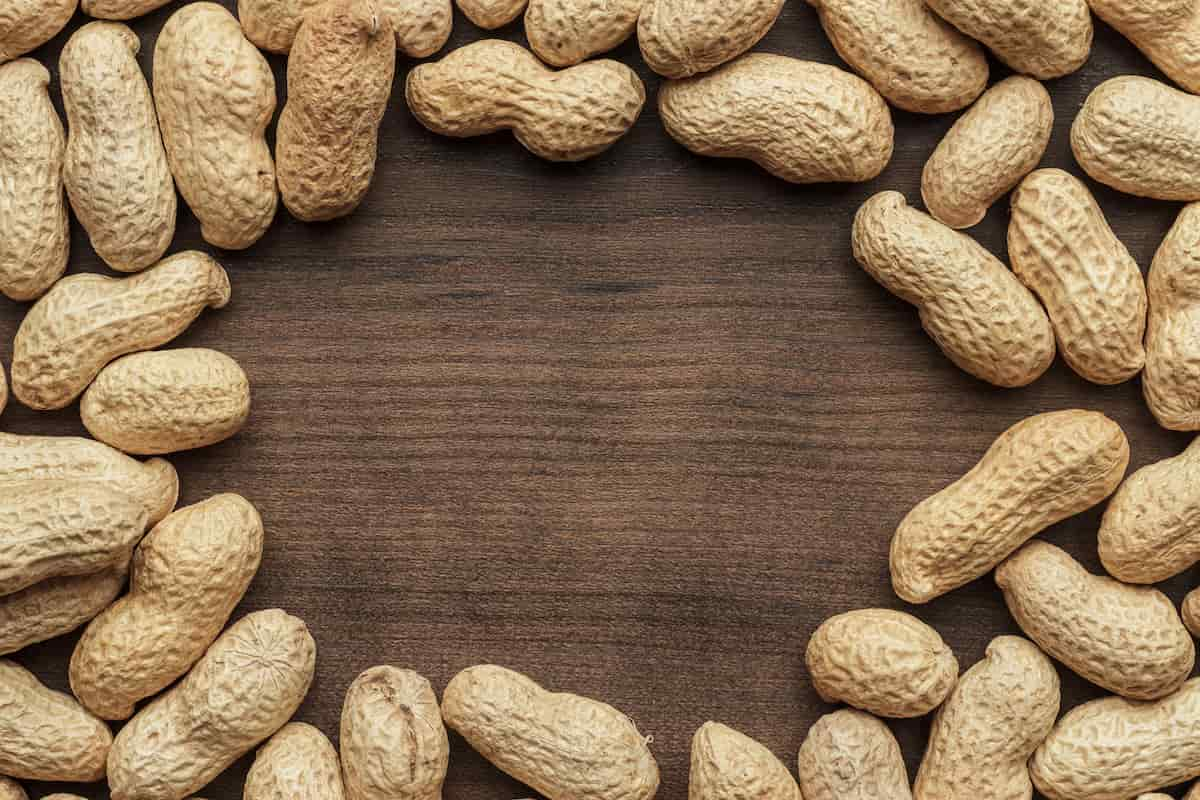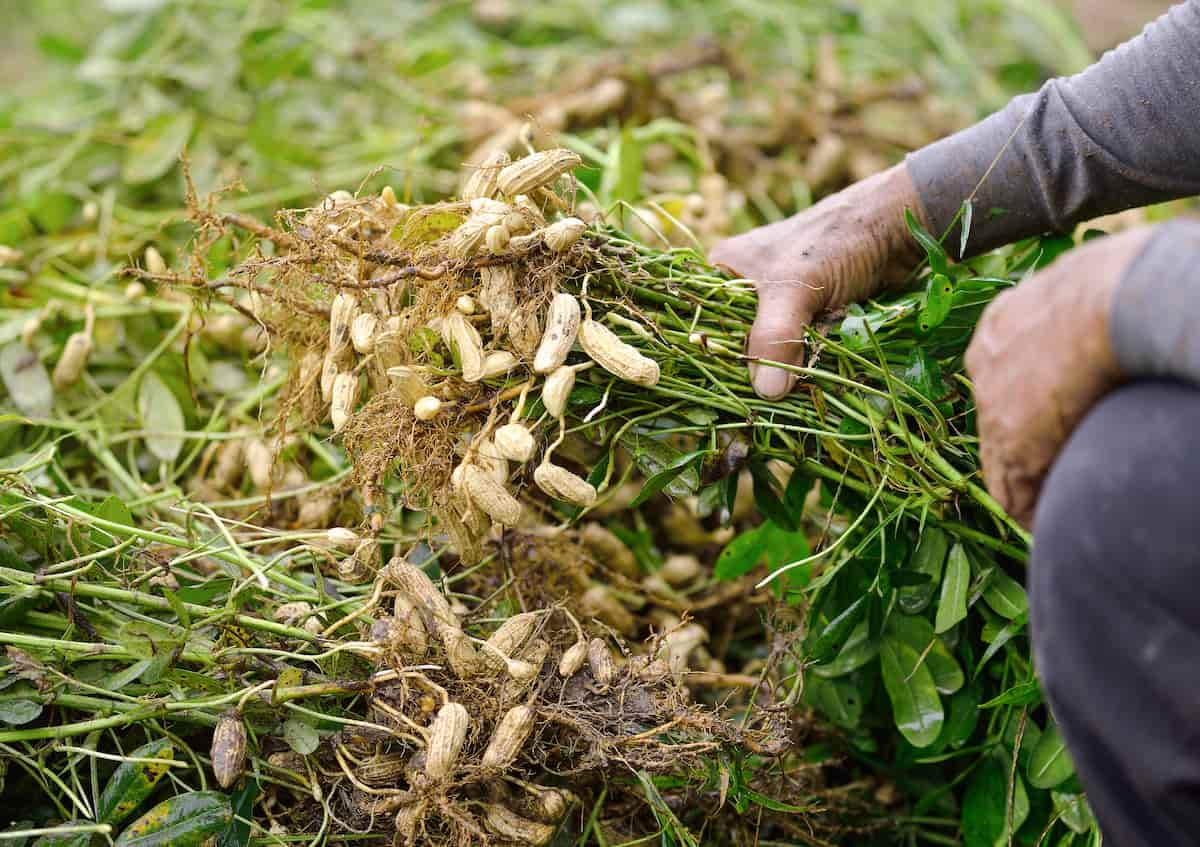Peanuts, also known as groundnuts, are a popular and nutritious crop that can be grown in various regions across the globe. North Carolina is one of the leading peanut-producing states in the United States, with its favorable climate and soil conditions making it an ideal location for peanut farming. Here we learn about the process of starting a peanut farm in North Carolina, from selecting the right land and variety to planting, irrigating, fertilizing, and harvesting your crop.

How to Start Peanuts Farming in North Carolina
Climate of North Carolina for Peanuts Cultivation
North Carolina has a diverse climate, with warm summers and mild winters, making it conducive to peanut farming. Peanuts thrive in temperatures between 65°F and 95°F and require a growing season of 120-140 frost-free days. The state’s subtropical climate, characterized by adequate rainfall and long, warm summers, provides the ideal environment for peanuts to grow and develop.
Choosing the Right Land
It’s important for the success of your peanut farm that you choose a good site. Peanuts do best in soft clay soils that drain well and have a pH level between 5.8 and 6.2. Don’t plant peanuts in clay or other heavy soils because they can make it hard for the peanut pods to grow. Also, peanuts need a lot of calcium in the soil, so it’s important to test the soil before planting and make changes based on the results.
Selecting the Right Peanut Variety
There are several peanut varieties suitable for cultivation in North Carolina, including the Virginia, Runner, and Spanish types. Virginia peanuts are large-seeded and commonly used for roasting or boiling, while Runner peanuts are medium-sized and used primarily for peanut butter production. Spanish peanuts are smaller-seeded and commonly used for confectionery and candy products. Each variety has unique characteristics, such as disease resistance and yield potential, so research and consult with local agricultural experts to choose the best variety for your farm.
Preparing the Soil
For a peanut crop to be good, the land must be prepared well. Start by ploughing and scraping the ground to make a flat, smooth place to plant the seeds. If your soil requires lime, apply it at least three months before planting. To improve the structure and richness of the soil, you can add organic matter like well-rotted dung or compost. Lastly, make raised beds or slopes to improve drainage and avoid waterlogging, which can lead to diseases and lower crops.
Planting the Peanuts
Peanuts are typically planted in North Carolina between late April and early June, depending on the variety and local climate conditions. Plant the seeds at 1-2 inches depth, spacing them about 2-4 inches apart within rows and 36-42 inches between rows. The optimal plant population for most varieties is around 4-5 plants per foot of row. Using a planter designed for peanuts will ensure accurate seed placement and prevent damage to the seeds during planting.
Irrigation Requirements
Although peanuts can survive brief periods of drought, they need regular moisture throughout the growing season for optimal growth and harvest. The critical periods for water demand are germination, flowering, and pod development. Use drip or furrow irrigation systems to provide adequate water to the crop while minimizing water waste. It’s essential to avoid overwatering, as excess moisture can lead to diseases and reduced yields.
In case you missed it: Frequently Asked Questions About Peanut Farming

Fertilization Needs
Peanuts have specific nutrient requirements, and proper fertilization is crucial for achieving high yields. Begin by applying a base fertilizer, such as 10-20-20, at planting to provide essential nutrients for early growth. Next, apply additional nitrogen (N), phosphorus (P), and potassium (K) based on your soil test results and the specific needs of your chosen peanut variety. Peanuts are legumes and can fix atmospheric nitrogen through a symbiotic relationship with rhizobia bacteria, reducing the need for nitrogen fertilizer applications.
Supplemental applications of calcium, magnesium, and micronutrients like boron may also be necessary, depending on your soil test results. Side-dress the crop with additional nitrogen and potassium during the flowering stage to support pod development. Remember to always follow the recommendations provided by your local agricultural extension office for optimal fertilization rates and timings.
Weed and Pest Management
Effective weed control is critical for peanut production, as weeds compete for nutrients, water, and sunlight. Start using pre-emergent herbicides to control early-season weeds, followed by post-emergent herbicides for broadleaf and grassy weeds. Cultivation and hand-weeding can also be used to manage weeds but take care not to disturb the peanut plants’ root systems.
Various pests can affect peanut crops, including thrips, leafhoppers, spider mites, and caterpillars. Monitor your crop regularly for signs of pest infestation and use integrated pest management (IPM) strategies, such as biological control, chemical control, and cultural practices, to minimize damage. Consult with your local agricultural extension office for guidance on your region’s most effective pest management strategies.
Disease Management
Peanuts are susceptible to several diseases, including leaf spot, white mold, and root-knot nematodes. Implementing a proactive disease management plan can help minimize crop loss. Choose disease-resistant varieties, practice crop rotation with non-host crops, and use fungicides as needed to manage disease pressure. Timely irrigation and proper fertilization can also help reduce disease incidence by promoting healthy plant growth.
Harvesting the Peanuts
Peanuts are typically ready for harvest between 120 and 140 days after planting, depending on the variety and growing conditions. To determine the optimal harvest time, carefully dig up a few plants and examine the pods. The peanuts are ready for harvest if the inner hulls are dark and the seeds are well-filled.
In case you missed it: 1 Acre Groundnut/Peanut Cultivation Project Report in India: Production Cost and Profit

Begin by using a specialized peanut digger to lift the plants from the soil, allowing the peanuts to dry in the field for several days. Once the plants have dried, use a peanut combine to separate the peanuts from the vines. Finally, dry the peanuts to a moisture content of 10% or less before storing them in a well-ventilated, cool, and dry location.
Conclusion
Given the state’s favorable climate and established market for peanut products, peanut farming in North Carolina can be a rewarding and profitable venture. By following this step-by-step production guide, from selecting the right land and variety to planting, irrigating, fertilizing, and harvesting your crop, you’ll be well on your way to establishing a successful peanut farm in North Carolina.
- Feed Your Flock for Less: Top 10 Tips to Save on Chicken Feed
- Ultimate Guide to Ossabaw Island Hog: Breeding, Raising, Diet, and Care
- Hatching Answers: The Top 10 Reasons Your Chickens Aren’t Laying Eggs
- Eggs and Economics: Breaking Down the Cost of Raising Backyard Chickens
- Defend Your Greens: Proven Methods to Keep Iguanas Out of Your Garden
- Ultimate Guide to Cinnamon Queen Chicken: A Comprehensive Guide for Beginners
- Ultimate Guide to California Tan Chicken: Breeding, Raising, Diet, Egg-Production and Care
- Ultimate Guide to Marsh Daisy Chicken: Breeding, Raising, Diet, and Care
- 10 Types of Chicken Farming Businesses You Can Start for Profits